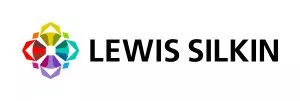- within Employment and HR topic(s)
- with Senior Company Executives, HR and Finance and Tax Executives
- in United Kingdom
- with readers working within the Accounting & Consultancy, Business & Consumer Services and Technology industries
Employees are turning to generative AI to draft lengthy, "lawyerly" grievances, putting strain on the HR teams asked to triage and respond to them. How should employers deal with the increased length and number of grievances, and what should they do about all those (sometimes dubious) case references?
Many employers are asking their employees to adopt generative AI tools at work. It isn't a surprise, therefore, that employees are increasingly using the same tools to draft their grievances. Although AI tools have the potential (if used in the right way) to help employees organise their thoughts, and articulate their concerns with more clarity and structure, their use in this context can also present challenges for employers. In this article, we explore these challenges and offer some top tips for HR teams tasked with responding to AI generated grievances.
The challenges of AI-drafted grievances
Whilst the complaints and issues may not have changed, AI has made some grievances more difficult for HR to deal with and creates additional challenges:
- Volume and structure – Grievances
drafted using AI are often extremely lengthy, with the time it will
take to digest and review the grievance likely to eclipse how long
it took to generate. The content will of course depend on the
quality and clarity of the prompts, but experience indicates that
AI generated grievances can be repetitive and can also lack a clear
structure. Following the arguments (or even identifying the issues
complained about) can be difficult.
- Complex and legalistic – In the pre-AI
world, grievances typically focused on factual allegations that the
employer needed to investigate. However, AI can add a layer of
complexity by introducing legal arguments at the click of a button.
That said, AI tools are notorious for inventing or misapplying case
law. Complaints littered with case and statute references may look
impressive, and seem intimidating, at first glance, but there is a
chance that these are irrelevant, or even entirely false.
- Reduced realism – AI-generated
grievances often contain exaggerated language and broader
accusations, lacking the natural restraint of a manually written
complaint. Unlike the deliberate process of drafting a grievance by
hand, AI can produce large volumes of text that may be copied
without close review—leading to strong claims that reflect
the tool's suggestions more than the employee's actual
intent.
- Data risks - If an employee uses a public AI
platform to help produce their grievance, there is a risk that they
will input sensitive company data, or sensitive personal data about
colleagues, raising data protection and confidentiality risks. To
mitigate this, employers should implement clear policies governing
the use of AI and provide all staff with training on responsible
usage, including what types of data are appropriate to share.
- Optimistic advice – It's quite likely that an employee who uses AI to help them write a grievance will also be looking to the tool for legal advice or to gauge their chances at tribunal. However, AI often tells users what they want to hear rather than providing a balanced and accurate assessment, especially when it lacks full context. This means that employees could be getting an overly optimistic view of their prospects of success, a potential barrier to resolution or financial settlement if that is on the cards.
How should employers respond?
Employers should adopt a two-part strategy: 1) reducing the chance of formal grievances being raised in the first place; and 2) improving their response strategy when one is received.
Mitigation – limiting the number of formal grievances
In this context, prevention is better than cure; every employer's priority should be seeking to ensure that employees resolve their issues informally and promptly whenever appropriate. Early intervention can often resolve concerns before they develop into formal grievances, and informal resolution is essentially the first option in the Acas Code of Practice on disciplinary and grievance procedures (the ACAS Code). It is essential that HR and management build a positive and supportive workplace culture and act effectively when conflicts inevitably arise. Employers should ensure that:
- Grievance policies emphasise informal resolution and outline
that, whilst it is inevitable that problems will arise from time to
time, often the best and fastest way to resolve these is to raise
them informally. Policies should assist employees in doing this by,
for example, signposting employees to discuss the issue with their
manager or a member of the HR team (where it is appropriate to do
so).
- They prioritise creating a workplace culture that fosters open
communication, rather than punishing it.
- They have clear pathways for employees to raise concerns or
issues about those in their reporting line, without fear that doing
so will lead to them facing detriment or retaliation.
- Management and HR are trained and empowered to deal with issues early and effectively.
Top tips for employers responding to AI generated grievances
1. Use face to face meeting where possible
In AI-drafted grievances it can be unclear which parts of the grievance go to the core of the employee's issue and are strongly held, and which elements are AI-suggested additions. Engaging directly with the employee is likely to be the most effective strategy for understanding what the complaint centres around, the employee's priorities and their ideal outcomes. Therefore, it can be helpful to hold a meeting with the employee as soon as possible after the grievance is raised.
Dealing with the volume of content is also likely to be a principal challenge so preparation for that meeting is likely to be key. If the grievance is particularly lengthy or complex, distil the grievance down into what appear to be the key concerns. At the meeting, the employee should be asked to explain in their own words what the main complaints are and how the issues fit together. If this differs from their written grievance, the HR representative can walk them through their written grievance to understand the points they are trying to make. At the end of the meeting, a summary of the key points should ideally be agreed with the employee.
More generally, the grievance process should be focussed around meetings, rather than relying on written correspondence. This approach limits further AI generated correspondence distracting from the core issues in the employee's grievance and helps ensure that the true reactions/recollections of any witnesses are captured (without them also passing their responses through an AI tool). However, it's important to remember to keep detailed notes of all meetings held.
2. Provide training to managers and HR
An AI generated grievance is likely to be daunting in both length and the forcefulness of the language. Providing training to managers and HR professionals on how to spot signs of AI generated grievances could therefore be helpful. This training can help teams respond to grievances more effectively, meaning they are less likely to be overwhelmed by any lengthy or overly legalistic wording, and understand the best approach to take when responding.
3. Don't be tempted to respond point-by-point
Whilst it can be tempting to respond to grievances on a point-by-point basis, this is unlikely to be the best approach, particularly with AI generated grievances that are lengthy and legalistic. Taking this approach can be time consuming, encourage further AI-generated lengthy rebuttals from the employee and, potentially, even legitimise irrelevant or inaccurate content. The best approach is to clarify and summarise the employee's key concerns and limit your response to addressing the substantive matters that are relevant to the employment relationship. Don't get drawn into looking into case law references and/or feel the need to address those references – focus on the facts.
4. Remember the basics still apply
An AI-generated grievance is still a grievance. Employers' obligations do not change, and they need to ensure that they:
- Follow the ACAS Code.
- Run a fair procedure – investigate promptly, meet with the employee bringing the grievance, come to a decision and provide a right to appeal.
- Remember that their investigation will likely be disclosable in any resulting litigation.
These obligations apply regardless of whether the grievance was drafted using AI and, if the matter results in litigation, an Employment Tribunal can adjust any award made by up to 25% for unreasonable failure to comply with the ACAS Code.
What about AI detectors?
Some employers are considering using detection tools to flag up AI, but what would this achieve? Current tools are often unreliable and may pert attention from the substance of the grievance to questions about its origin. There are also significant data protection considerations in processing data in this way. In most cases, focusing on clarifying and addressing the grievance itself will be more effective than attempting to determine whether AI was involved.
Looking ahead
The use of AI in employment processes is only set to increase, and employers are likely to encounter these issues more frequently in the future. In addition to a rise in AI-generated grievances, we are seeing employees turn to AI tools to help formulate arguments and draft documents during redundancy consultation processes and employment tribunal proceedings. Many of the risks, considerations, and practical tips outlined above will be equally relevant when responding to these developments.
The content of this article is intended to provide a general guide to the subject matter. Specialist advice should be sought about your specific circumstances.



